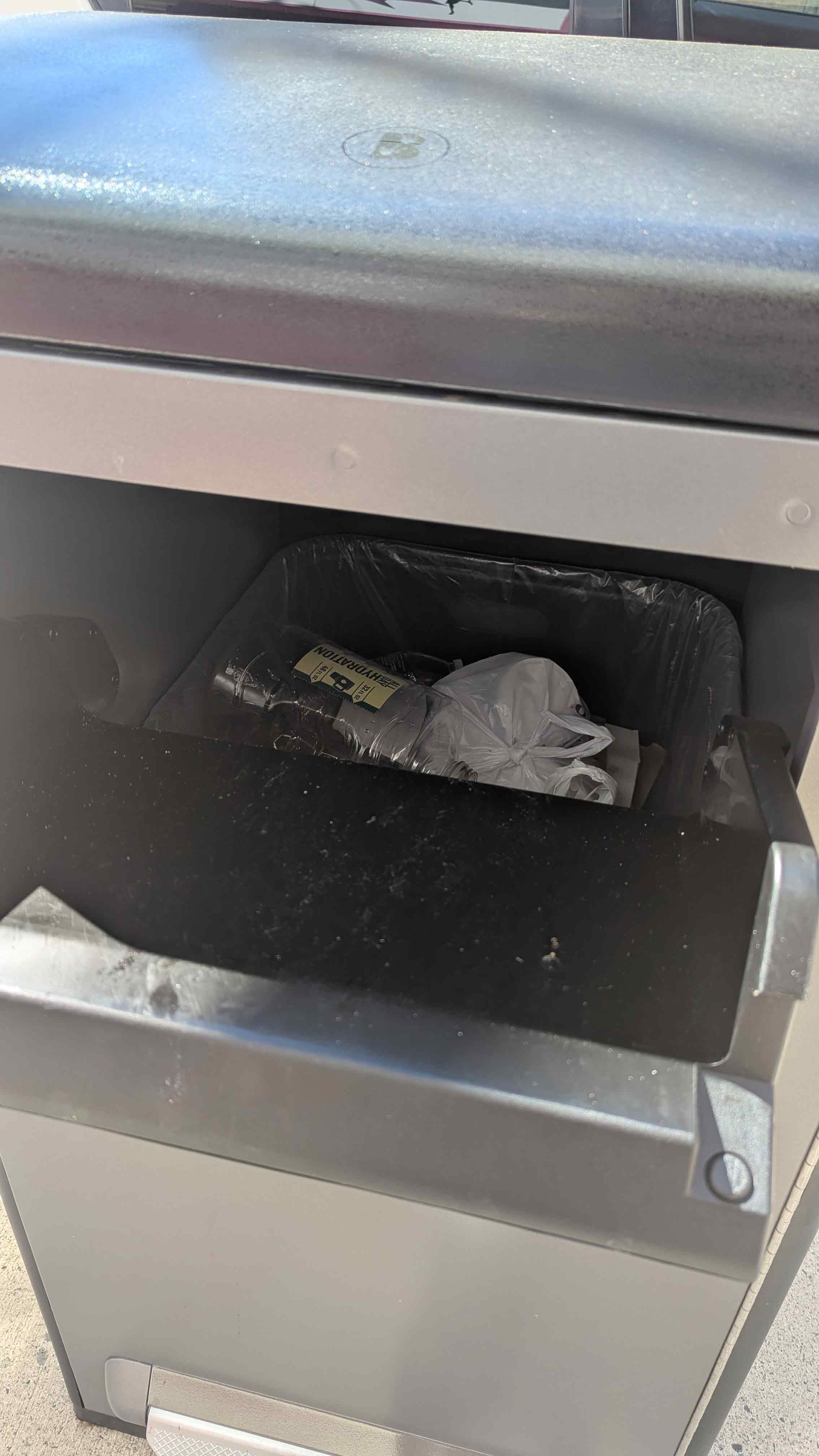Harrison’s $50K Bigbelly Garbage Cans Raises Questions
Oct 17, 2025
The Town of Harrison has purchased 30 Bigbelly solar-powered compacting garbage cans for over $50,000, part of an effort to reduce litter and improve cleanliness along Harrison Avenue and North Frank E. Rodgers Boulevard, the town’s main commercial corridors.
The sleek, enclosed garbage can, often seen in downtown areas of larger cities, are designed to hold more trash than conventional receptacles, compact waste using solar energy, and signal to town officials when they need to be emptied. Harrison officials hope this “smart” technology will address what residents have described as a growing garbage and litter problem in the business district.
A Modern Solution or a Misguided Investment?

While the goal is to keep sidewalks cleaner, some residents question whether Bigbelly bins actually solve the underlying issue. Garbage bags being placed directly on the sidewalk rather than in proper trash containers leading to trash getting out of the garbage bag and blown through the business district.
“The Bigbelly openings are too small for regular garbage bags,” one resident noted. “The town’s real problem isn’t litter from pedestrians — it’s landlords and tenants not putting their garbage in garbage cans but directly on the sidewalk.”
Critics argue that if the town intended to tackle litter, spending $50,000 on high-tech trash compactors may be excessive. They suggest that the Mayor and Council should have instead used the funds to provide standard garbage cans to landlords or tenants who lack them.
Mixed Reviews from Other Cities

Harrison is far from the first municipality to adopt Bigbelly’s “smart waste” technology. While the system promises efficiency and sustainability, other cities’ experiences offer cautionary lessons:
- Philadelphia invested millions in Bigbelly bins to reduce trash collection frequency. However, a 2017 report found that nearly half of the units were not communicating properly with the city’s monitoring system. Some bins overflowed when sensors failed, and maintenance costs grew as the city had to hire a dedicated repair crew to service the units.
- Boston faced similar problems. Some bins became inoperative after solar panels were obscured by graffiti, stickers, or vandalism, and the city failed to fully use the data analytics feature designed to improve collection routes.
- Philadelphia’s Old City District reported persistent overflows, even after upgrading to newer models — an indication that technology alone could not solve maintenance and collection issues.
Paterson’s Experience: Technology Meets Reality
Closer to home, the City of Paterson NJ also experimented with Bigbelly bins in its downtown area. According to local reports, the city initially welcomed the bins as a way to modernize public sanitation. However, maintenance and misuse soon became recurring problems.
Paterson officials found that bins frequently filled with household garbage rather than street litter, and some residents complained that the compactor mechanisms jammed when large trash bags were stuffed inside. The high cost of repairs and frequent battery replacements strained the city’s maintenance budget. Over time, some of the bins were removed or fell into disrepair.
One Paterson official summarized the challenge succinctly: “They work if the community uses them correctly and the city keeps them maintained — but if either side slips, they quickly become expensive ornaments on the sidewalk.”
The Cost Factor
Bigbelly bins come with a hefty price tag, ranging between $1500 and $6,000 per unit, depending on the model and features. The solar-powered compactor models like those used in Harrison are on the lower end of that range.
Maintenance costs include battery replacements (roughly $500 every five years) and additional expenses from vandalism or technical issues. Some cities, such as the University of Mississippi, have chosen to lease the bins instead of purchasing them outright, paying about $4,560 per unit over five years, including maintenance.
While the company markets long-term savings from reduced trash collection — citing up to 80% fewer pickups — that benefit depends heavily on proper use, consistent upkeep, and responsive collection schedules.
Looking Ahead: A Cleaner Future or Another Experiment?
For Harrison, success will likely depend less on technology and more on public behavior and municipal follow-through. If landlords and tenants continue placing garbage bags directly on sidewalks, the Bigbelly bins will not address the town’s larger sanitation issue.
Still, supporters argue that the bins send an important message about Harrison’s commitment to modernization and urban cleanliness, aligning with its broader redevelopment efforts in the downtown and the Harrison Redevelopment Zone.
The coming months will reveal whether the Bigbelly investment delivers on its promise, or whether it becomes another costly experiment in the town’s ongoing battle against litter.
📣 Tell us what you think on our Community Discussion Board. Not a member yet? Sign up today and be part of the conversation. It's a Free Membership.

